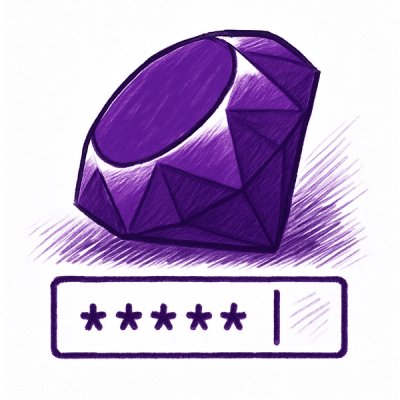
Security News
Opengrep Adds Apex Support and New Rule Controls in Latest Updates
The latest Opengrep releases add Apex scanning, precision rule tuning, and performance gains for open source static code analysis.
com.sendgrid:sendgrid-java
Advanced tools
This Java module allows you to quickly and easily send emails through Twilio SendGrid using Java.

This library allows you to quickly and easily use the Twilio SendGrid Web API v3 via Java.
Version 3.X.X of this library provides full support for all Twilio SendGrid Web API v3 endpoints, including the new v3 /mail/send.
This library represents the beginning of a new path for Twilio SendGrid. We want this library to be community driven and Twilio SendGrid led. We need your help to realize this goal. To help make sure we are building the right things in the right order, we ask that you create issues and pull requests or simply upvote or comment on existing issues or pull requests.
If you need help using SendGrid, please check the Twilio SendGrid Support Help Center.
Update the development environment with your SENDGRID_API_KEY, for example:
cp .env_sample .env
.env to add your API key.env file to set the variable in the current sessionsource .env
Choose your installation method - Maven w/ Gradle (recommended), Maven or Jar file.
Add the following to your build.gradle file in the root of your project.
...
dependencies {
...
implementation 'com.sendgrid:sendgrid-java:5.0.0-rc.1'
}
repositories {
mavenCentral()
}
...
mvn install
You can just drop the jar file in. It's a fat jar - it has all the dependencies built in.
Sendgrid provides an API for sending alerts. The following is the minimum needed code to send an alert using the Java Helper Library:
import com.sendgrid.*;
import java.io.IOException;
public class Example {
public static void main(String[] args) {
ApiKeySendGrid.init(System.getenv("SENDGRID_API_KEY"));
CreateAlertRequest createAlertRequest = new CreateAlertRequest.Builder(Type.USAGE_LIMIT, "example@example.com").percentage(50).build();
try {
CreateAlert createAlert = new CreateAlert();
createAlert.setCreateAlertRequest(createAlertRequest);
ApiResponse apiResponse = createAlert.send();
System.out.println(response.getStatusCode());
System.out.println(response.getBody());
System.out.println(response.getHeaders());
} catch (ApiErrorResponse apiErrorResponse) {
System.out.println(apiErrorResponse.getMessage());
}
}
}
import com.sendgrid.*;
import java.io.IOException;
public class Example {
public static void main(String[] args) {
ApiKeySendGrid.init(System.getenv("SENDGRID_API_KEY"));
GetAlert getAlert = new GetAlert(xxxxxxx); // alert id
ApiResponse getAlertResponse = null;
try {
getAlertResponse = getAlert.send();
GetAlert200Response alert = (GetAlert200Response) getAlertResponse.getBody();
System.out.println(alert);
} catch (ApiErrorResponse apiErrorResponse) {
System.out.println(apiErrorResponse.getMessage());
}
}
}
import com.sendgrid.*;
import java.io.IOException;
public class Example {
public static void main(String[] args) {
ApiKeySendGrid.init(System.getenv("SENDGRID_API_KEY"));
ListAlert listAlert = new ListAlert();
ApiResponse getAlert = null;
try {
getAlert = listAlert.send();
List<ListAlert200ResponseInner> body = (List<ListAlert200ResponseInner>)getAlert.getBody();
System.out.println(body);
} catch (ApiErrorResponse apiErrorResponse) {
System.out.println(apiErrorResponse.getMessage());
}
}
}
import com.sendgrid.*;
import java.io.IOException;
public class Example {
public static void main(String[] args) {
ApiKeySendGrid.init(System.getenv("SENDGRID_API_KEY"));
DeleteAlert deleteAlert = new DeleteAlert(xxxxxxx); // alert id
ApiResponse deleteAlertResponse;
try {
deleteAlertResponse = deleteAlert.send();
System.out.println(deleteAlertResponse.getStatusCode());
System.out.println(deleteAlertResponse.getBody());
System.out.println(deleteAlertResponse.getHeaders());
} catch (ApiErrorResponse apiErrorResponse) {
System.out.println(apiErrorResponse.getMessage());
}
}
}
You can send an email with the /mail/send Helper (here is a full example).
The Mail constructor creates a personalization object for you. Here is an example of how to add to it.
You can also send an email without the /mail/send Helper (here is a full example).
Here is the full example of using v3 web API.
Examples of common API use cases, such as how to send an email with a transactional template.
All updates to this library are documented in our CHANGELOG and releases.
We encourage contribution to our libraries (you might even score some nifty swag), please see our CONTRIBUTING guide for details.
Quick links:
Please see our troubleshooting guide for common library issues.
sendgrid-java is maintained and funded by Twilio SendGrid, Inc. The names and logos for sendgrid-java are trademarks of Twilio SendGrid, Inc.
If you need help installing or using the library, please check the Twilio SendGrid Support Help Center.
FAQs
This Java module allows you to quickly and easily send emails through Twilio SendGrid using Java.
We found that com.sendgrid:sendgrid-java demonstrated a not healthy version release cadence and project activity because the last version was released a year ago. It has 0 open source maintainers collaborating on the project.
Did you know?

Socket for GitHub automatically highlights issues in each pull request and monitors the health of all your open source dependencies. Discover the contents of your packages and block harmful activity before you install or update your dependencies.

Security News
The latest Opengrep releases add Apex scanning, precision rule tuning, and performance gains for open source static code analysis.

Security News
npm now supports Trusted Publishing with OIDC, enabling secure package publishing directly from CI/CD workflows without relying on long-lived tokens.

Research
/Security News
A RubyGems malware campaign used 60 malicious packages posing as automation tools to steal credentials from social media and marketing tool users.